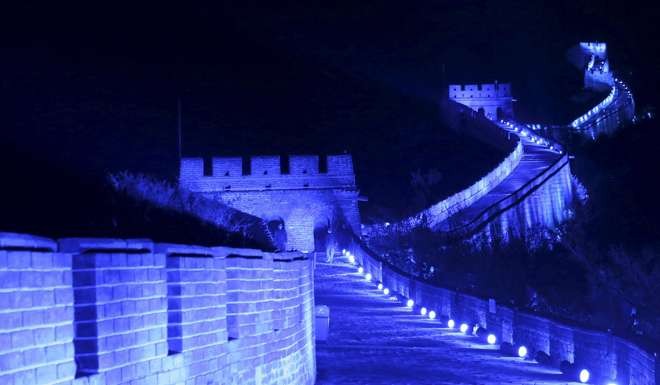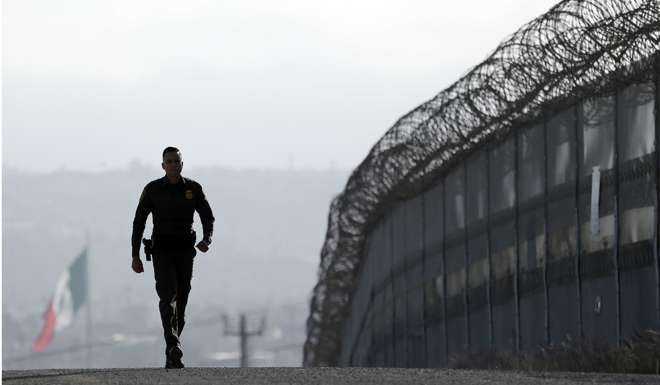
History shows that building border walls is ‘splendid, but ineffective policy’

As we move into the second week of what can best be called the Great Trumpian Tragicomedy, one can only admire the sheer hyperactive energy of the apprentice now occupying the Oval Office.
I thought we might have a few moments to deliberate over the folly of scrapping the Trans Pacific Partnership, or the harmful consequences of taking a hatchet to Obamacare.
But no. I realise that when politics has become theatre rather than substance, then the pressure to move on to the next headline-grabbing soundbite or Tweet is irresistible. Since the TPP and Obamacare, we have cruised briefly over NAFTA, and the visit of Britain’s leader Theresa May, and have blundered “bull-in-a-China shop” into the subjects of walls, and a fully fledged diplomatic skirmish with Mexico. Who needs House of Cards?
Never short of a little hubris, the Pinocchio Apprentice, has clearly got excited about walls: “I would build a great wall, and nobody builds walls better than me, believe me,” he said last week. As a property developer, he has without doubt built many grand walls in his hyperactive lifetime, but nobody builds them better? Really?
Perhaps he forgets the long history of hubris and testosterone that has driven megalomaniacs and emperors to build walls over millennia. And we are not just talking about China’s Qing Shi Huang who conceived the Great Wall of China some 2,400 years ago, or Rome’s Hadrian who marked the northern limits of his empire with a 73-mile wall across the north of Britain, or the mysterious Madukkansai in Sri Lanka built 2,000 years ago, or the 195-mile Gorgon Wall striding down to the Caspian Sea, whose purpose still today remains unclear.

Pretty much all of these walls, right back through antiquity, seem to share one characteristic in common: they all fail to achieve what they are intended to achieve. Instead they tend to provide “an illusion to soothe an anxious nation”, as the famously eloquent economist Jagdish Baghwati noted as his own Indian government set about ring-fencing Bangladesh.
Jagdish is one of the only people I know who have provided an eloquent defence of building such a wall: “It was an ineffective policy, but was nevertheless a splendid policy,” he observed. “To be seen doing nothing at all, even though one cannot really close the border, would have been politically explosive since it would have been read as indifference or indecisiveness. And building a fence was the least disruptive way of doing nothing while appearing to be doing something.”
For the theatrical Apprentice, surely an initiative that does nothing while appearing to do something has irresistible appeal?
Ever since the Mexican-American war that ended in the February 1848 Treaty of Guadelupe Hidalgo, with the US trouncing the Mexicans and taking Texas as part of the booty of war, the US has nurtured anxieties about the porousness of its southern border. Since then, over 36 million Mexicans have become properly accredited American citizens (today accounting for over 11 per cent of the US population), most of them living in California and Texas. An extra 5.8 million Mexicans are thought to be working illegally in the US.
For the theatrical Apprentice, surely an initiative that does nothing while appearing to do something has irresistible appeal?
Anxieties range from simple racial prejudice, to concern over the roles played by Mexican criminal networks in cahoots with US counterparts to bring drugs and illegal workers into the country. Anxieties have soared since the 2001 terrorist attacks on the World Trade Centre in New York. Action over the past decade has been underpinned by George W Bush’s Secure Fence Act, with much of the current 650 miles of fence built since then.
There is reasonable evidence that grounds for anxiety have diminished since then. Over 1.2 million Mexicans were caught in 2005 trying to cross the border. By 2008 this fell to 724,000. And by 2010 (the latest year with reliable figures) the number had fallen to 463,000 – the lowest catch-rate since 1972.
But as the Apprentice has explicitly admitted, he builds good walls, and clearly enjoys it. So to concede that current policies might be working is to concede an invaluable opportunity to do nothing while appearing to do something. He says it will cost US$8 billion to US$12 billion, but given his Pinocchio tendencies, will probably cost around twice that. And anyway, most of the spending will go to good, red-blooded American institutions (Boeing has in the past been a major beneficiary, with efforts to build a “virtual” wall where a physical wall has proven problematic).
People like Bill Odle, who actually lives up against an existing part of the border wall, are less convinced. “If you put up a wall, you better have somebody watching it. And if you have somebody watching it, why the hell do you need a wall?”

As for Mexico’s harassed President Enrique Peña Nieto, his distaste for the wall could not be clearer. “I regret and condemn the decision of the United States to continue construction of a wall that, for years, has divided us instead of uniting us. Mexico does not believe in walls,” he said.
But the Mexican President was never a property developer with a passion for building walls, and he was also clearly not trained in the art of politics as theatre. His best hope must be that our Apprentice will quickly move on to other theatrical matters, and leave some trusted technocrats to pick up the pieces.
As Di Cintio concluded in his endearing book: “Perhaps the most effective way to bring down a wall is to disregard it. An ignored wall ceases to be a barrier at all. Walls will continue to rise, and people will continue to tear them down.” Hong Kong of course has its own wall – the boundary with Shenzhen. It is interesting to puzzle when we will be able to disregard it, when it might cease to be a barrier at all.
David Dodwell researches and writes about global, regional and Hong Kong challenges from a Hong Kong point of view